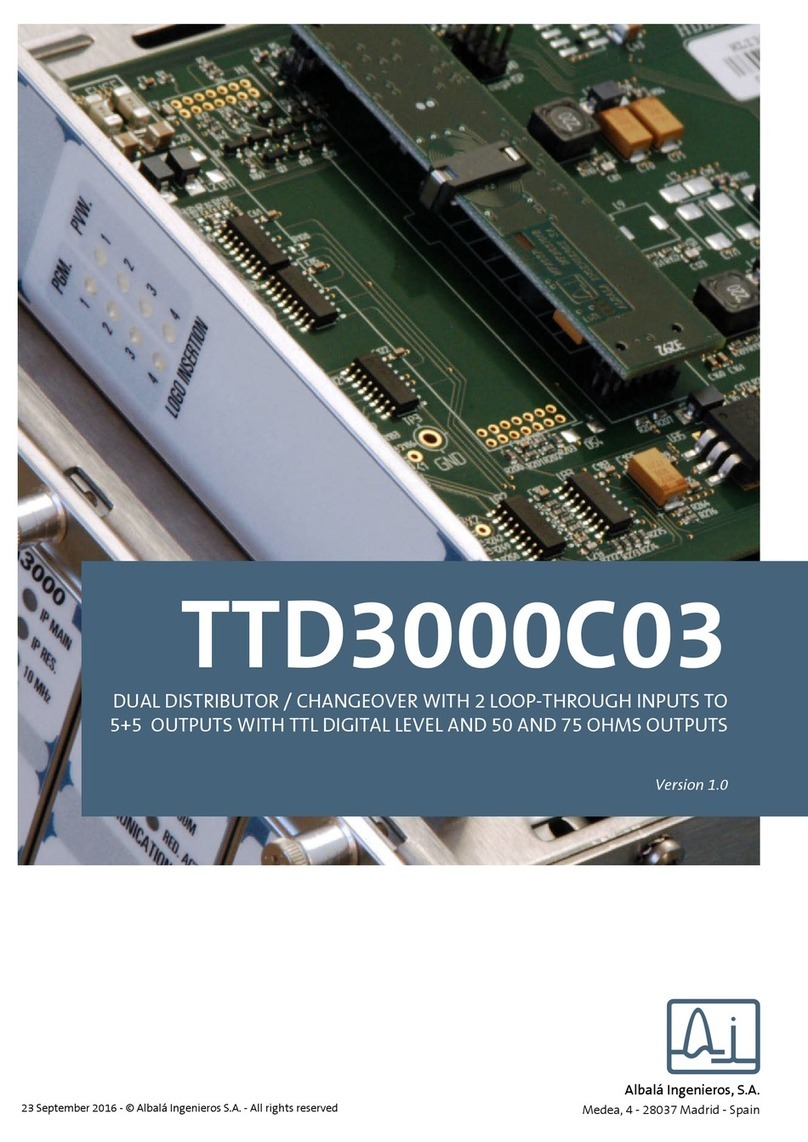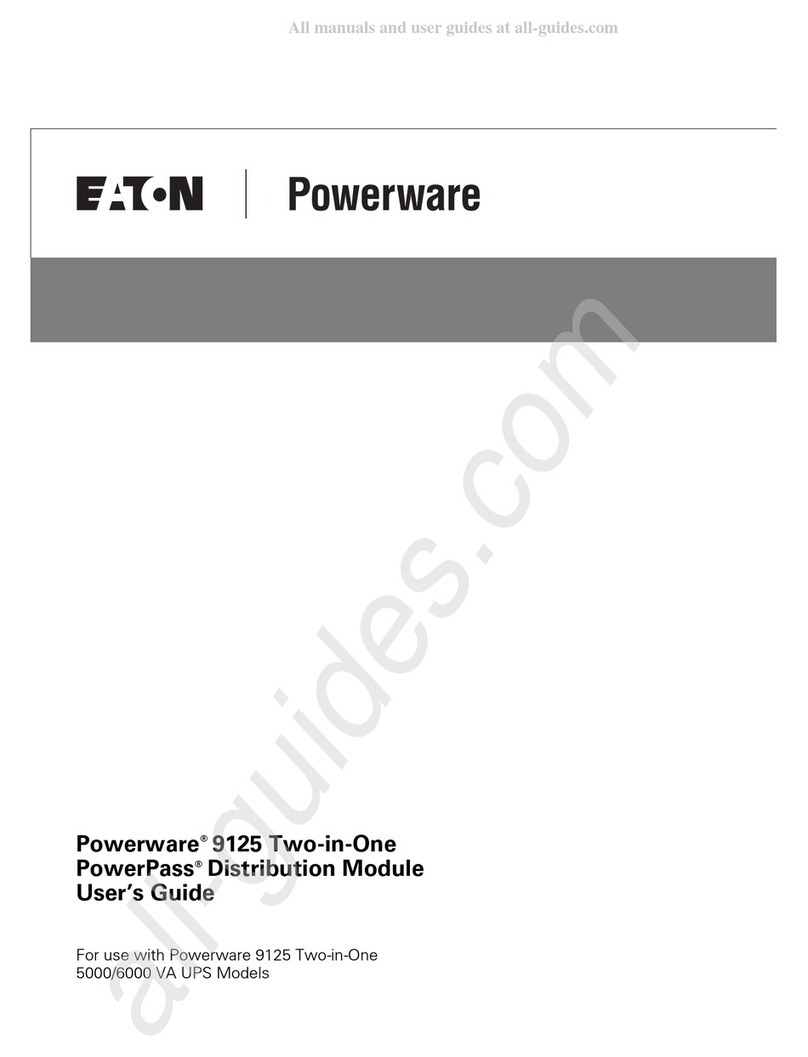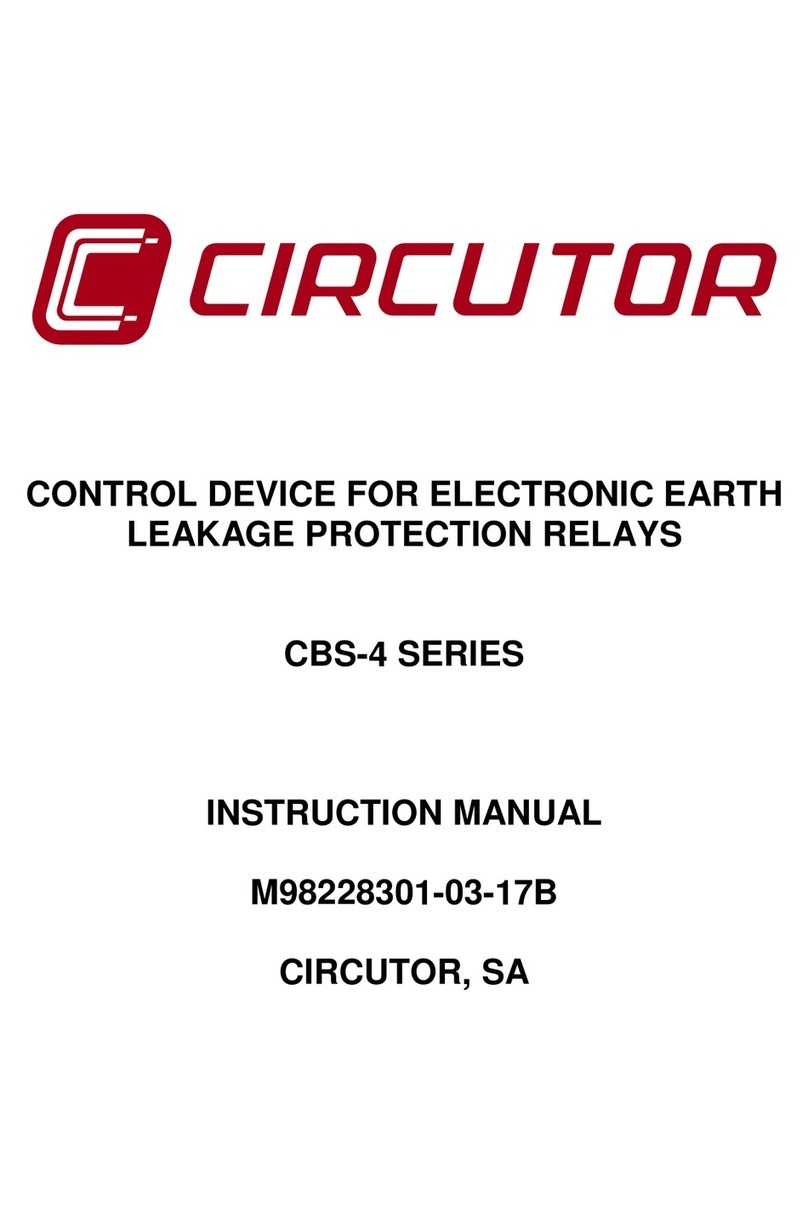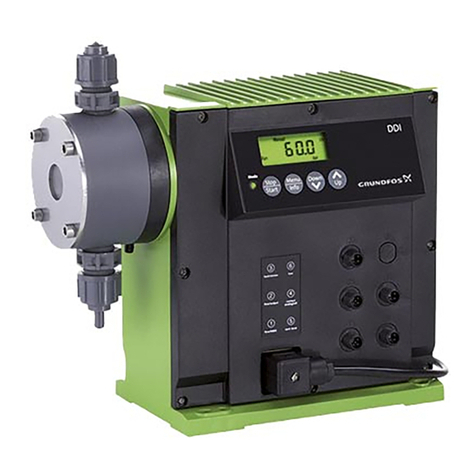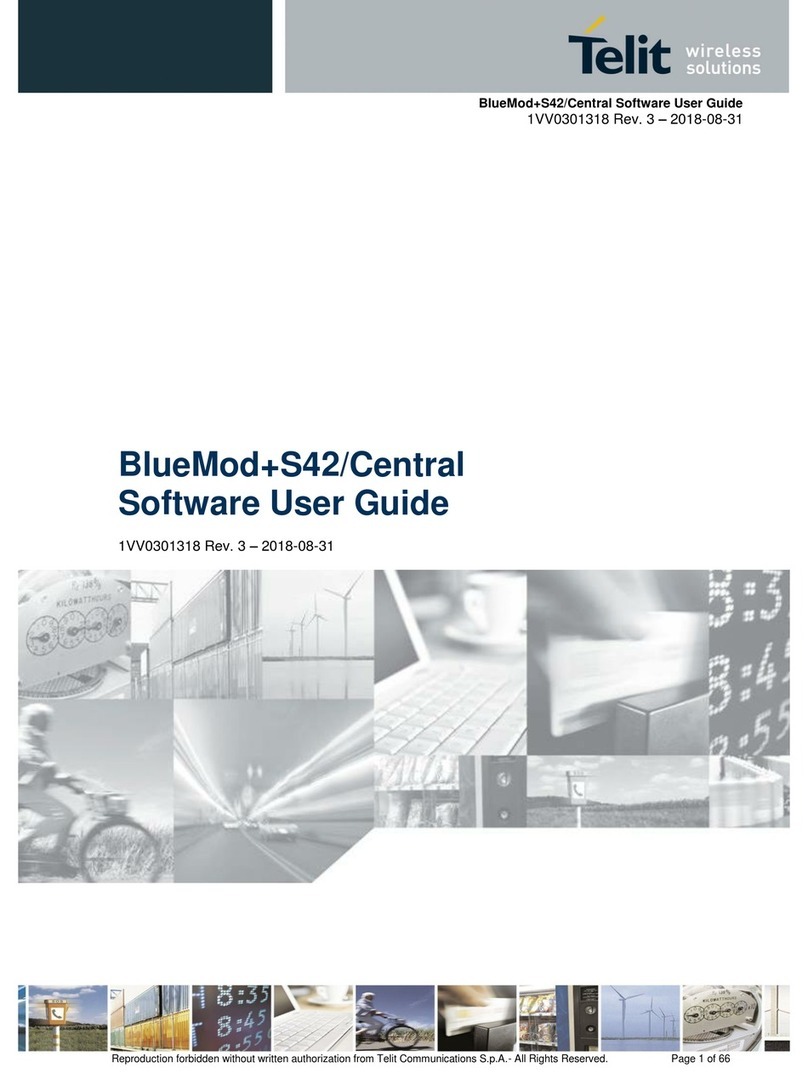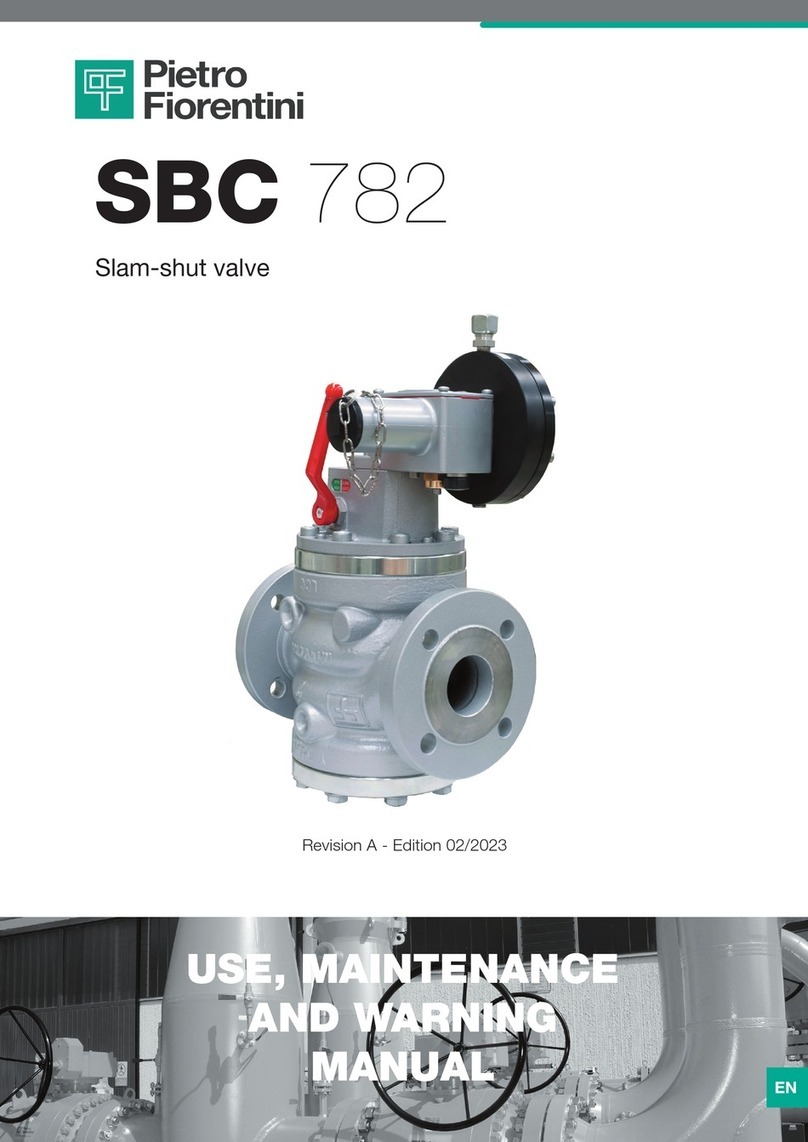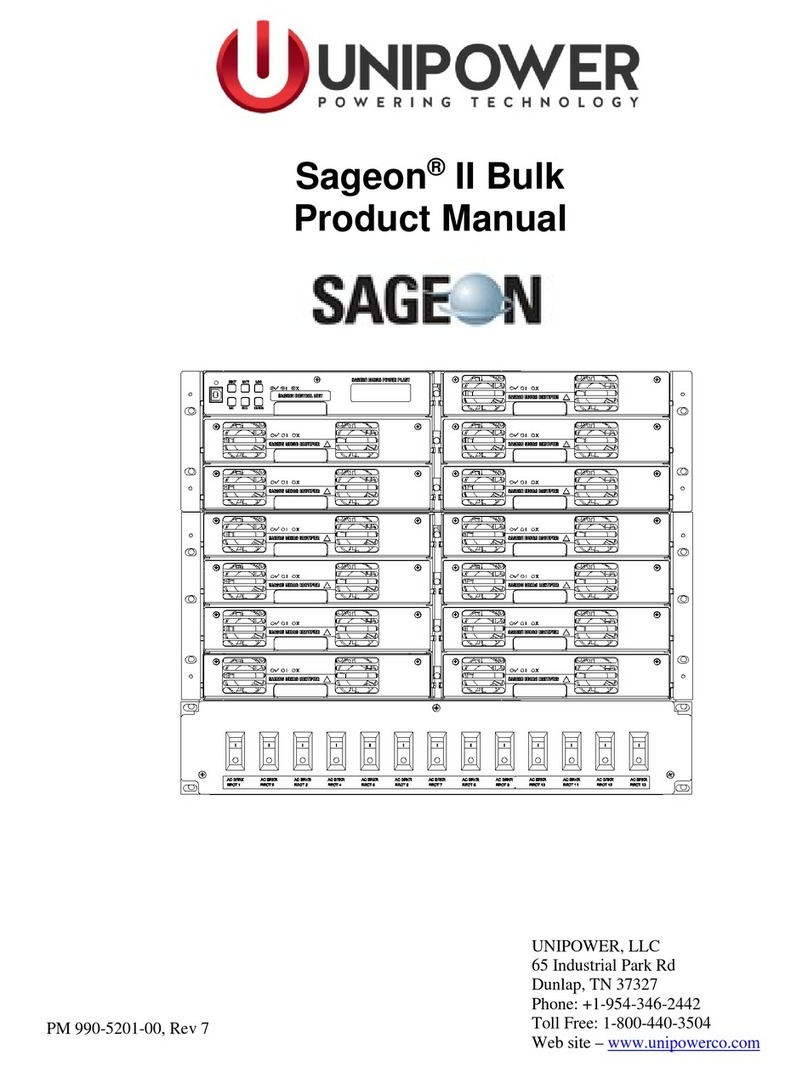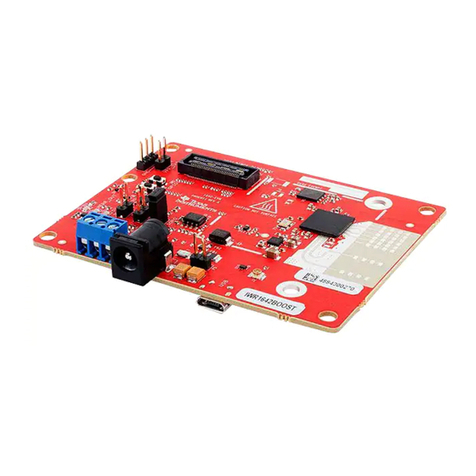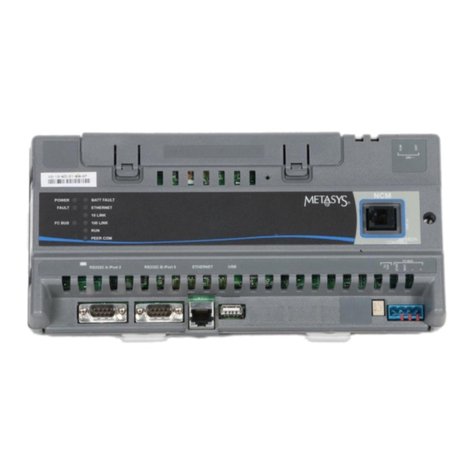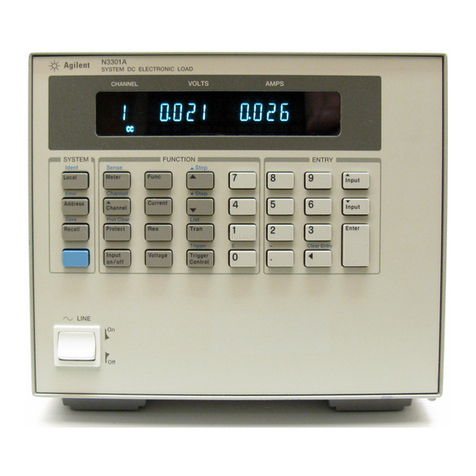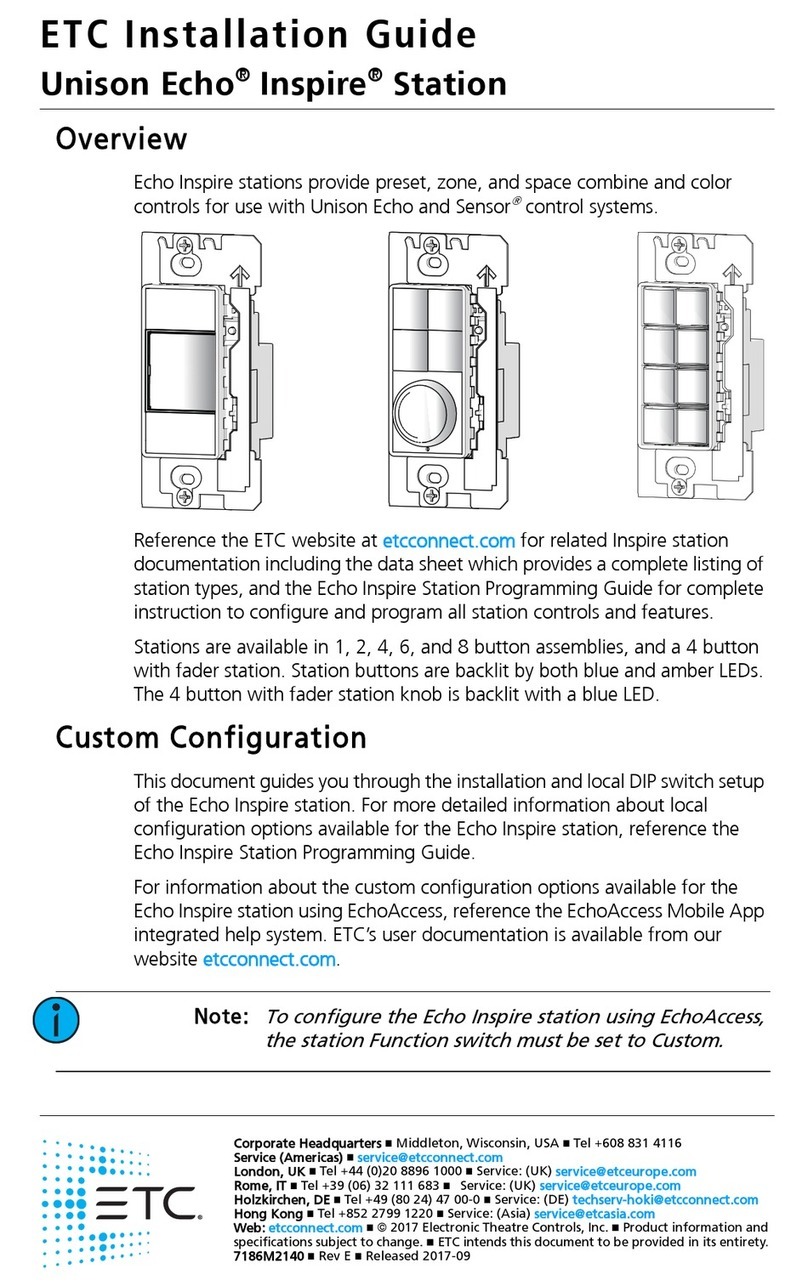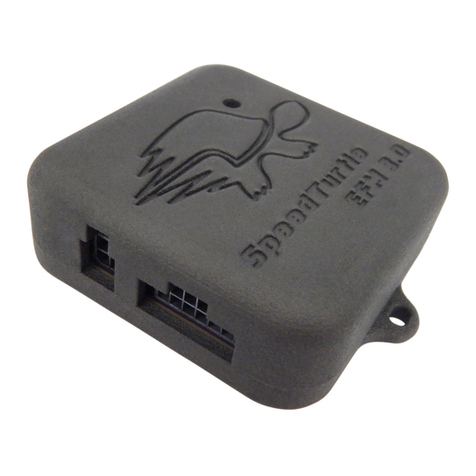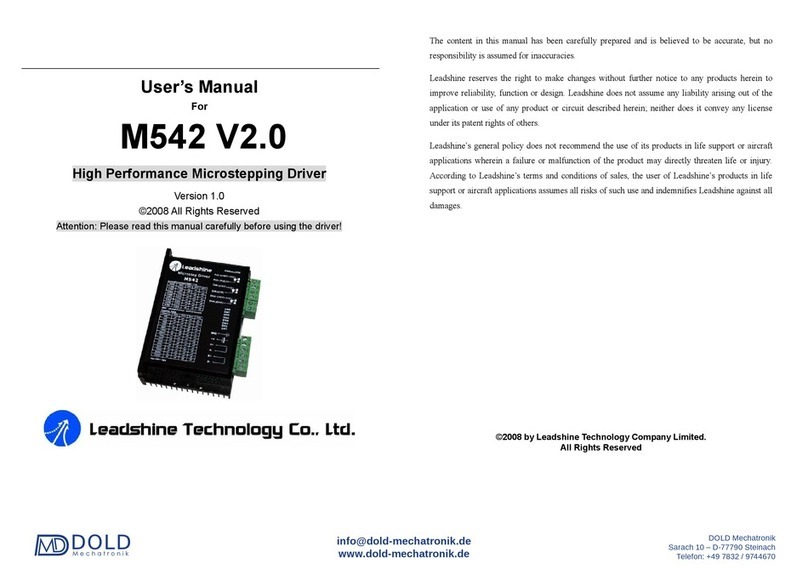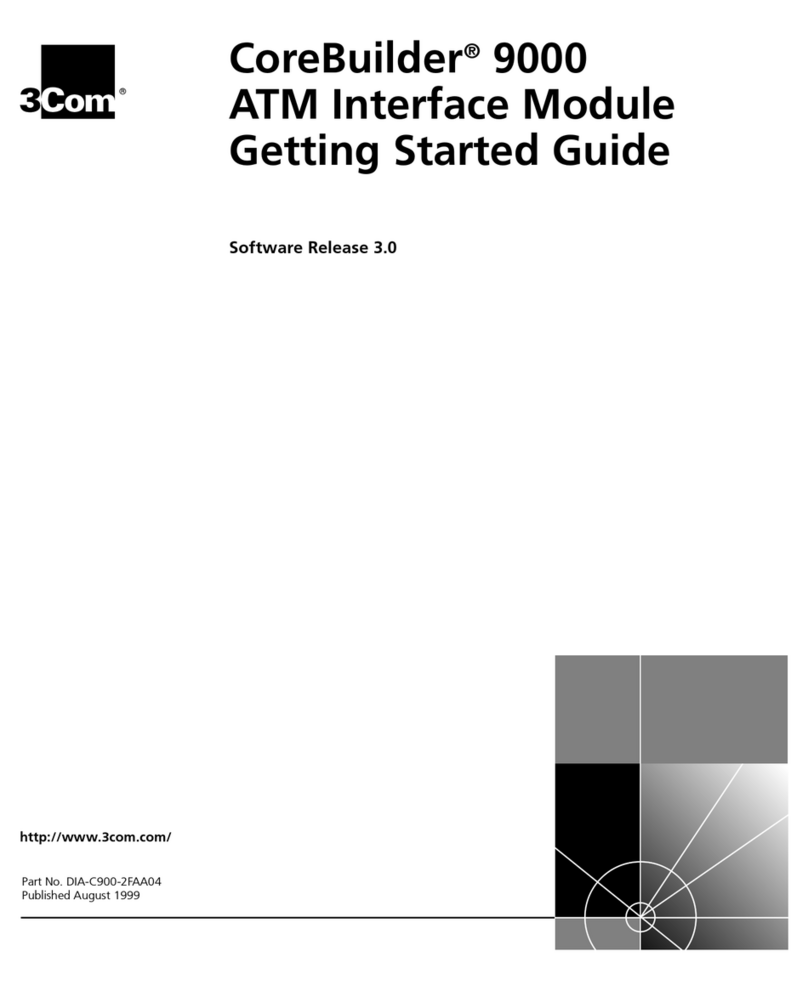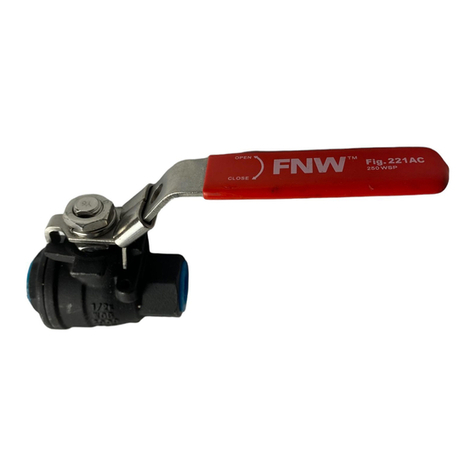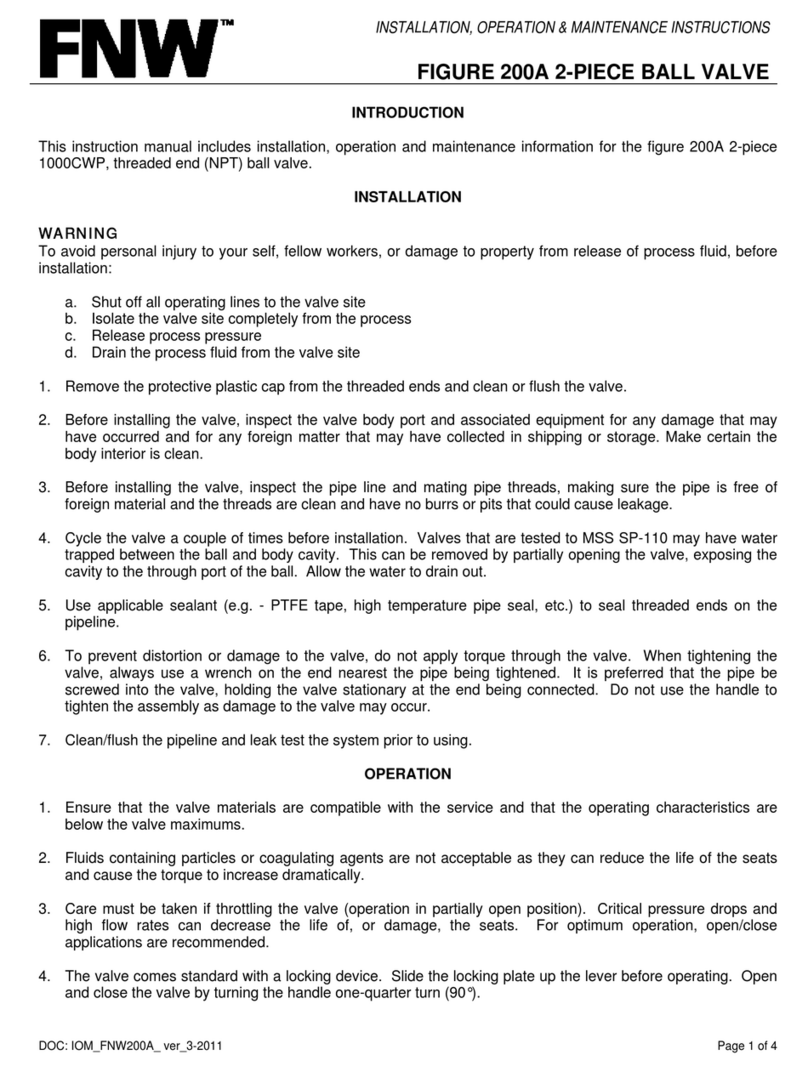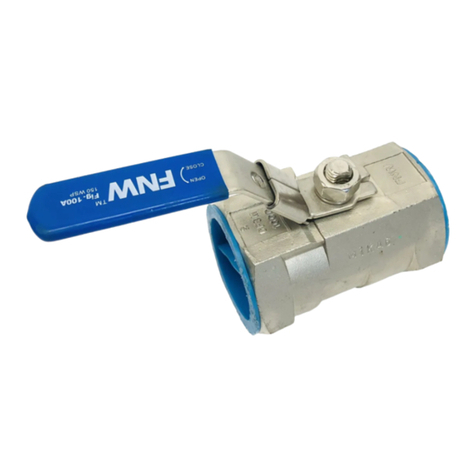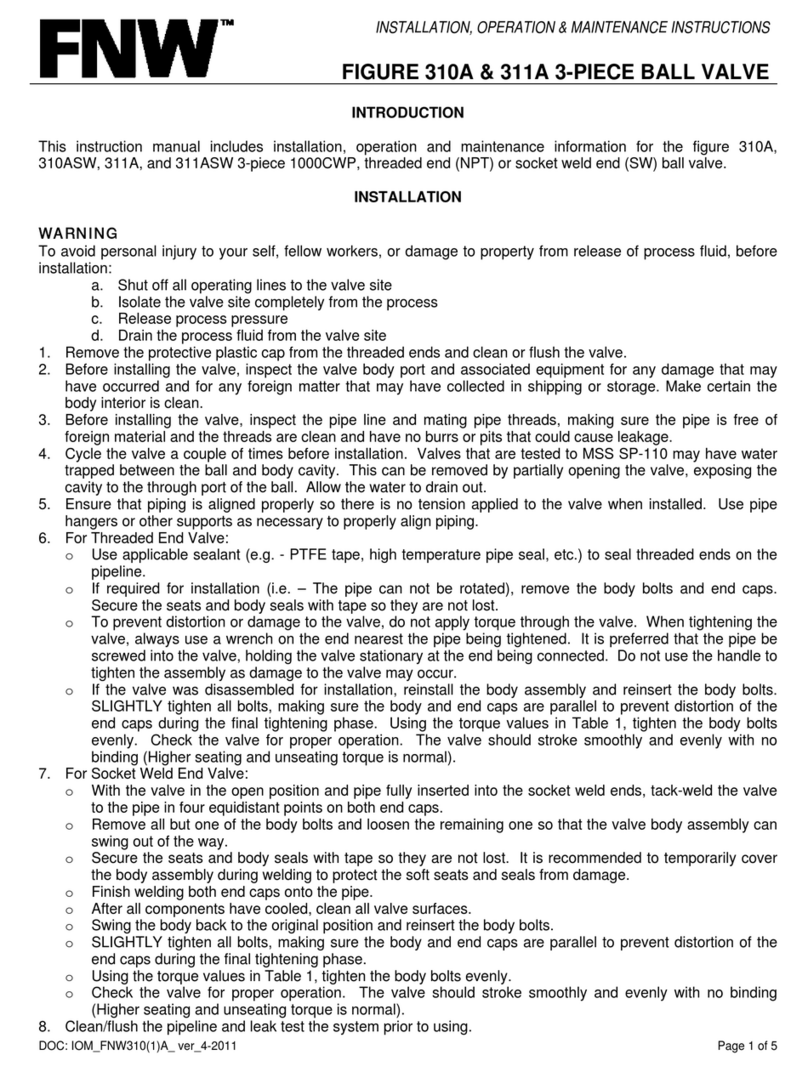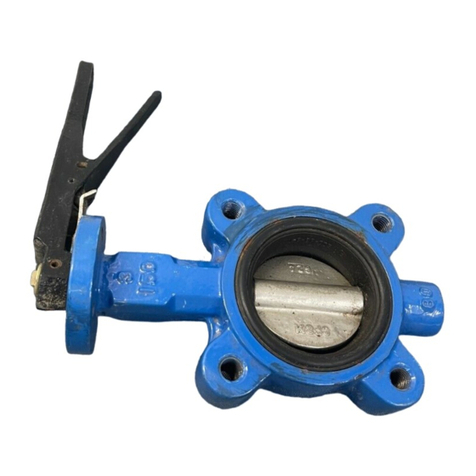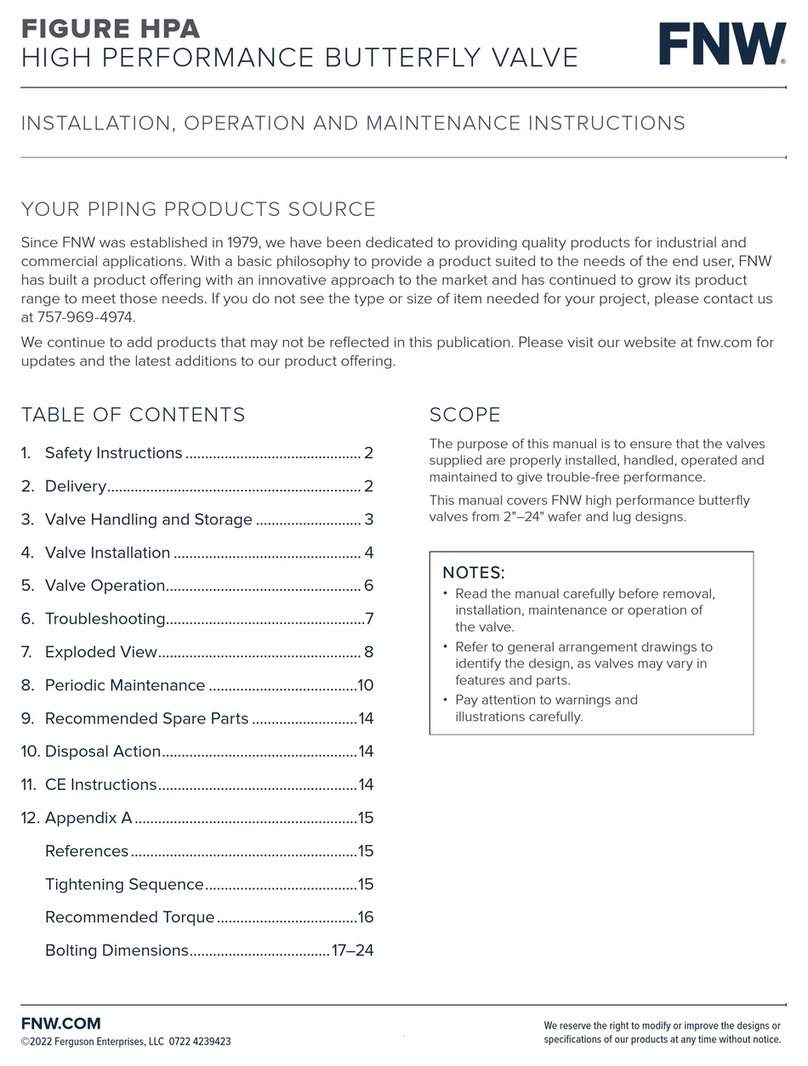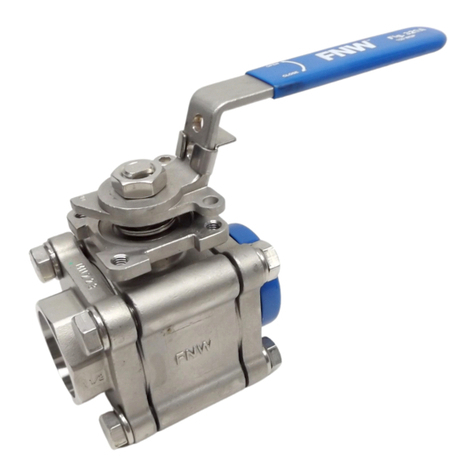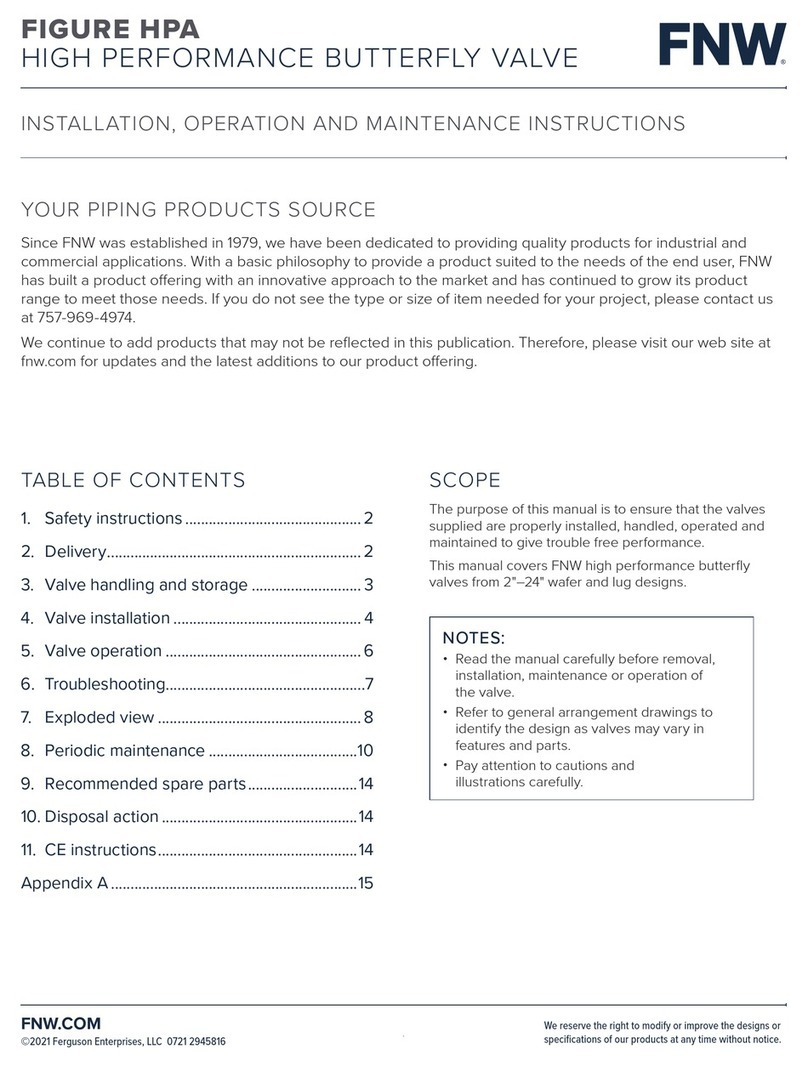
DUCTILE IRON FLANGED GATE VALVE
FIGURE 751
FNW.COM We reserve the right to modify or improve the designs or
specifications of our products at any time without notice.
INSTALLATION, OPERATION & MAINTENANCE INSTRUCTIONS
©2022 Ferguson Enterprises, LLC 0522 4108704
DISASSEMBLY AND ASSEMBLY
GATE VALVES
See Figure for the following disassembly and assembly
instructions. NOTE: All gate valves may not have the same
components listed below. Refer to the corresponding valve
drawing for a parts list. These steps are after the valve has been
removed from the pipeline.
DISASSEMBLY
• Turn the handwheel () to open the valve.
• Remove the bonnet screws ().
• Mark the body () and bonnet () flanges to hold them in place
during assembly.
• Lift the bonnet (), stem () and disc () assembly out of the
body (), taking care not to scratch the disc surface.
• Remove the bonnet gasket () from the valve.
• Remove the valve plate () from the lifting nut () of the valve stem
().
• Loosen the locking screw () on the handwheel lock nut ().
Remove the handwheel lock nut () from the valve stem nut
(), and then remove the handwheel () from the valve stem
nut ().
• Loosen the nut () on the gland bolt () to release the gland
(). Turn the valve stem counterclockwise from the bottom of
the valve cover () to remove the valve stem nut (), pull out
the valve stem (), and remove the valve stem nut () from the
valve cover ().
• Remove packing () using a suitable tool.
ASSEMBLY
• Thoroughly clean the inside of the valve and all parts. Remove
any limescale, oil, grease or other foreign matter. Wipe disc ()
with a cloth. Clean body () and bonnet () inside and outside
surfaces and all nuts and bolts.
• Put packing () into the packing groove of bonnet (), align and
center the packing gland () into the packing groove, put on
the gland bolts (), tighten the nuts () by hand, and carefully
pass the valve stem () through the valve Packing hole in cap
(), gland (), until the stem thread engages with stem nut ().
Slowly rotate the valve stem female () counterclockwise until
the valve stem () protrudes from the valve stem female ()
and passes through the top of the valve cover ().
• Put the handwheel () on the valve stem nut () and fix it with the
handwheel lock nut (), then lock it with the locking screw ().
• Put a new gasket () in the groove of the top flange face of the
valve body (), the gasket can be greased with butter.
Do not reuse the gasket.
Figure 5 Disassemby and assembly
• Install the valve plate () on the lifting nut () on the valve stem
() to complete the assembly of the valve cover (), valve stem
() and valve plate () and other components.
• Slowly place the bonnet (), stem () and disc () assembly into
the body (). Pay attention to prevent the surface of the valve seat
from being scratched, align the flange of the valve cover () with
the top flange of the valve body () according to the mark made
in advance, make sure that the gasket () does not extend out of
the groove of the top flange of the valve body, and then fasten
it with screws () , when tightening the screws, do so diagonally
until tight. See recommended torque values in Table .
• Tighten the gland nuts () alternately by hand.
• Use handwheel () to open and close the valve. The action
should be smooth throughout the stroke










